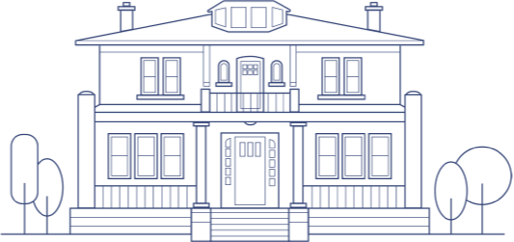Newsletter Edition November 2021
For many, Blockchain equals bitcoin. However, if we consider bitcoin as a product and blockchain as the technology behind it, then the correlation doesn’t hold. It will therefore mean that blockchain technology is bigger than bitcoin. In fact, while the hype of blockchain technology started in the financial sector, its applications have extended to other industries. Have you wondered what makes possible for you to trust the safety of the produce you are buying at a grocery store?
Walmart figured out a way. They were worried about the cases of contaminated food that strike the grocery industry annually. The stats are alarming in that each year, unsafe food makes around 600 million people sick across the globe. This, of course, has consequences both for the consumer and the business owners. So, working with IBM, Walmart has recently created a food traceability system based on blockchain technology. What this system makes possible now is a dramatic reduction in the time it takes to trace back a contaminated batch of food. Let’s say you want to buy mangos at Walmart. Before it took approximately 7 days to trace the origins of mangos, which means you could easily have bought and eaten a bad mango before they knew it was contaminated.
Now, it only takes them 2.2 seconds. Yes, you read it correctly, it has gone down from days to seconds! Walmart is building on case studies like this one to implement similar systems for all the food they sell. Sounds encouraging, but how does it happen?
Let’s start with what delays tracing back the source of a product. Four problems seem to be the central culprits:
- Intermediaries makes it difficult, if not impossible, for the customer to interact with the producer directly. And as you may have experienced, having a third person in the middle of a transaction always adds delays.
- The layers that exist in current business operations make it difficult to sustain transparency. You are never certain whether what is happening at the back is what you are being presented to, so you spend time trying to figure it out.
- The fear to lose control makes centralization prevalent. However, what we end up sacrificing is security. Having all the information in one central location also means that any breach or damage to such location can result in losing precious data and information. And recovering data takes time.
- Monitoring and tracing are still time-consuming processes in most companies.
Now, let us see how blockchain technology has emerged as a solution to those problems. In essence, blockchain is the technology that makes possible peer-to-peer transactions without the need for a central authority (a bank, the government, a hospital, etc.) to operate and maintain the journal of the transaction.
A useful analogy:
Imagine a huge football field with rows and rows of glass rooms that people can use to have private conversations. Imagine a huge football field with rows and rows of glass rooms that people can use to have private conversations. Because they are made of glass, everybody can see who is inside of the rooms. However, nobody can access a room unless they get the key that only opens that particular room. Say you and another person are interested in using a glass room because you want to carry out a transaction together. How do you get the key? Well, it is not an actual “key”. It is rather a piece of software that is created when you and the other person agree to initiate the transaction.
What’s important here is that while the key gives you both access to the glass room, the room is not yours or the other person’s. The key simply is a mechanism that allows you and the other person to conduct the transaction inside a glass room without being interrupted (i.e., hacked), even though everybody can see you inside. This way, a blockchain is like a series of glass rooms that everyone can see through, but nobody has access unless being part of a transaction. As such, blockchain itself isn’t a device or a machine. It is a method to keep track of the use of glass rooms (i.e., transactions).
In the case of cryptocurrency, such as bitcoin, blockchain technology allows people to exchange money directly without the involvement of a bank, much as how physical cash is used.
In the case of the retail industry, blockchain technology eliminates intermediaries and adds transparency by allowing consumers to have access to all the details about a product. Do you want to know whether the coffee you drink or the meat you eat come from ethically driven farms? Companies that use blockchain technology will become a trend for consumers who want to be well-informed about the sources and journeys of the products they are interested in.
In the case of healthcare, blockchain technology is about authenticity. The main goal is to make medical records available to patients without the threat of hacking or leaking. Some even say that making medical data decentralized may facilitate the creation of strategies against the spread of virus and disease.
In the case of government, ensuring the safety of public records is paramount. However, having those records stored in a central government database is the perfect target for hackers. Wouldn’t you want to have your social insurance number, passport, visas, driver license, patents, etc., stored in a more secured way? This is how blockchain technology is being used by governments across the world.
Financial, retail, government and healthcare sectors are not the only sectors that are diving into the waters of blockchain technology. Expect, tourism, transportation, and manufacturing sectors to follow. Next time you book a vacation, go to your doctor, buy at your grocery store, or update your driver’s license, pay attention to where in the process you might be experiencing blockchain technology!
While blockchain technology sounds appealing, we cannot conclude this CCS without considering the other side of the coin. Blockchain technology is a movement against centralization and control. As we are all driven by different values and beliefs, how do you feel about the idea of handling control of most information and processes to the general public? For some this would be unthinkable, for others this thought wouldn’t make them cringe a bit. Regardless, it seems as though, blockchain technology has arrived and is here to stay. Therefore, the question is not about “if”, it’s about “when” will blockchain technology become part of your life. To do it responsibly though, it would be best to start by becoming better informed about it. And then to engage in thoughtful conversations about how this technology will meet our societal expectations of security, privacy, and ethical behaviour.
If you are interest in some of the applications mentioned in this CCFS, please see:
- https://www.hyperledger.org/learn/publications/walmart-case-study The Walmart case study.
- https://medrec.media.mit.edu MIT/Harvard project on using blockchain technology in electronic health records.
- https://www.shelterzoom.com A company that offers blockchain technology services for real state.
- https://guardtime.com/en A company that some governments are using to store public records.
Assante Capital Management Ltd. Is a member of the Canadian Investor Protection Fund and is registered with the investment industry Regulatory Organization of Canada.
This material is provided for general information and is subject to change without notice. Every effort has been made to compile this material from reliable sources however no warranty can be made as to its accuracy or completeness. Before acting on any of the above, please make sure to see a professional advisor for individual financial advice based on your personal circumstances.
Prepared by The Andrews Group in collaboration with Dr. Sayra M Cristancho, PhD., Scientist and Producer of the Research in 90sec’s podcast (listen in Apple Podcast or Spotify)
The Andrews Group recognizes that their clients have a broad range of interests that are important to them.
Client Curiosity Sheets (CCS) are offered by The Andrews Group to complement the Education Series. We aim to provide a quick synopsis of topics that clients care and are curious about.
If you have a topic you would like to learn more about, let us know at mandrews@assante.com




